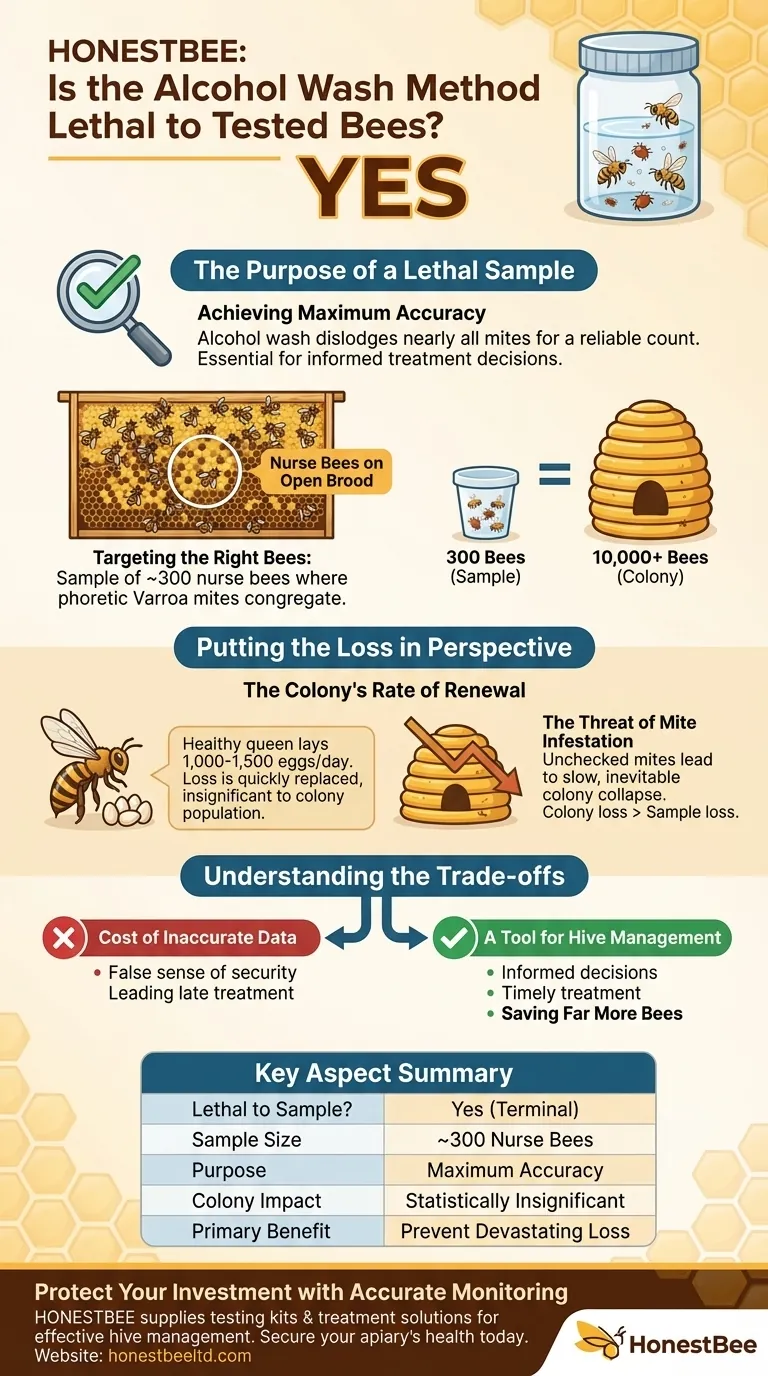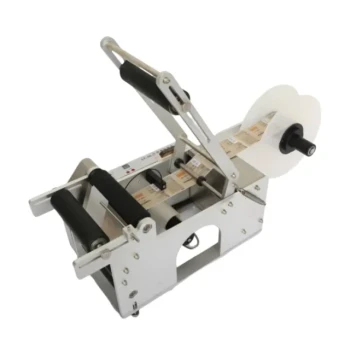Yes, the alcohol wash method is a terminal test that kills the bees being sampled. This is a deliberate part of the process, as the alcohol wash is designed to provide the most accurate possible count of Varroa mites within a hive by thoroughly separating them from the bees.
While intentionally sacrificing bees seems counterintuitive, the loss of a small sample is statistically insignificant to the colony's health. This trade-off provides the critical, accurate data needed to protect the entire colony from a potentially devastating Varroa mite infestation.

The Purpose of a Lethal Sample
The primary goal of Varroa mite testing is to get an accurate snapshot of the infestation level within a colony. This data directly informs whether treatment is necessary to prevent the hive from collapsing.
Achieving Maximum Accuracy
The alcohol wash is considered a gold standard because it is highly effective at dislodging mites from the bees' bodies. The agitation in the alcohol ensures that nearly all mites are separated, providing a reliable count.
Selecting a Representative Sample
A sample size of approximately 300 bees is used to ensure the test is statistically significant. This number provides a reliable representation of the mite load across the tens of thousands of bees in the colony.
Targeting the Right Bees
Testers specifically collect nurse bees from frames containing open brood. Phoretic Varroa mites (those not currently reproducing in a cell) congregate on these bees, making this sample the most accurate indicator of the hive's true mite problem.
Putting the Loss of Bees in Perspective
The loss of 300 bees can feel substantial, but it's crucial to view it within the context of a healthy honey bee colony's natural cycle and the danger posed by mites.
The Colony's Rate of Renewal
A healthy queen bee can lay between 1,000 and 1,500 eggs per day. The loss of 300 bees from a test is quickly replaced, often in a matter of hours, and has no discernible impact on the colony's population or productivity.
The Threat of a Mite Infestation
The alternative to accurate testing is a hidden Varroa mite infestation. Unchecked, these mites will decimate a colony by feeding on bees, transmitting viruses, and causing a slow, inevitable collapse. The loss of the entire colony is a far greater threat than the loss of a small sample.
Understanding the Trade-offs
Choosing a testing method involves weighing the need for accuracy against the desire to preserve every bee. The alcohol wash prioritizes data fidelity to ensure the long-term survival of the hive.
The Cost of Inaccurate Data
While non-lethal methods exist, the alcohol wash is widely used by professionals and researchers because of its reliability. An inaccurate, low mite count can give a beekeeper a false sense of security, leading them to withhold necessary treatment until it's too late.
A Tool for Hive Management
The procedure is a diagnostic tool, not a routine destructive act. The data allows beekeepers to make informed, timely decisions about treatments, ultimately saving far more bees than are sacrificed for the test.
Making the Right Choice for Your Goal
Your approach to mite testing should align with your overarching goal of maintaining healthy, productive colonies.
- If your primary focus is maximum accuracy to prevent hive loss: The alcohol wash provides the most dependable data to guide your treatment strategy and protect your investment.
- If your primary focus is managing a sustainable apiary: Using a reliable testing method like the alcohol wash is a fundamental part of integrated pest management and responsible beekeeping.
Ultimately, proactive and accurate monitoring is the cornerstone of keeping your honey bee colonies alive and well.
Summary Table:
| Aspect | Key Detail |
|---|---|
| Lethal to Sample? | Yes, the test is terminal. |
| Sample Size | Approximately 300 nurse bees. |
| Purpose | Achieves maximum accuracy for Varroa mite count. |
| Colony Impact | Loss is statistically insignificant; colony quickly recovers. |
| Primary Benefit | Provides critical data to prevent devastating hive loss. |
Protect Your Investment with Accurate Monitoring
For commercial apiaries and beekeeping equipment distributors, the health of your colonies is your business. Accurate Varroa mite testing is non-negotiable for preventing catastrophic losses.
HONESTBEE supplies the beekeeping supplies and equipment you need for effective hive management. From testing kits to treatment solutions, our wholesale-focused operations ensure you have access to reliable tools.
Let's discuss how our products can support your integrated pest management strategy.
Contact HONESTBEE today to secure the health of your apiary.
Visual Guide

Related Products
- Adjustable Formic and Acetic Acid Dispenser for Bee Mite Treatment
- Professional Dual-End Stainless Steel Hive Tool for Beekeeping
- Professional 3-Bar Frame Grip with Integrated Hive Tool
- HONESTBEE Advanced Ergonomic Stainless Steel Hive Tool for Beekeeping
- Plastic Chinese Queen Grafting Tool for Bee Queen Rearing
People Also Ask
- How can beekeepers ensure their hives survive the winter? A Guide to Colony Survival
- What should be done after treating a colony for varroa mites? A Step-by-Step Guide to Verifying Success
- What are phoretic mites? A Beekeeper's Guide to Monitoring Varroa Infestation
- What are some common predators and pests that target beehives? Protect Your Hives from Bears, Mites, and Beetles
- What is the optimal time for varroa mite control in nucs? Maximize Efficacy with Perfect Timing



















